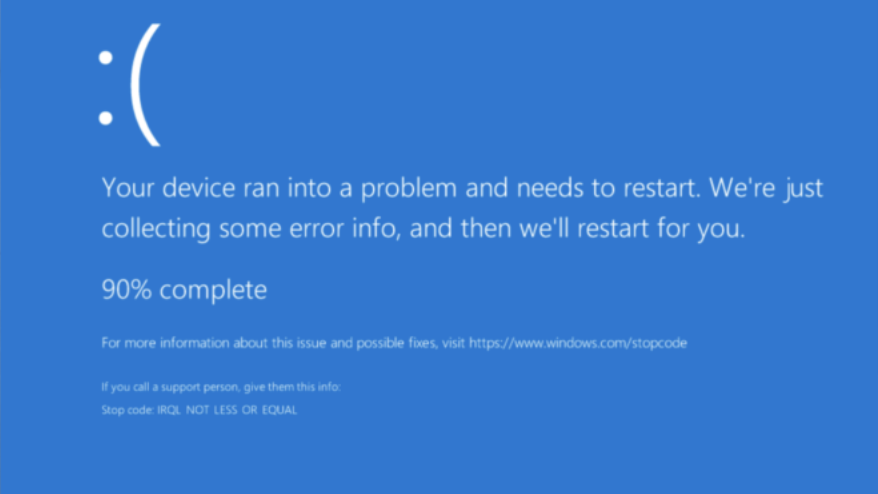
A common Windows Blue Screen of Death stop code is labeled IRQL_NOT_LESS_OR_EQUAL. This cryptic name refers to an Interruption ReQuest Line (IRQL) that PCs use to signal events in urgent need of attention or response. You'll see this in either Windows 10 or Windows 11.
In fact, IRQL_NOT_LESS_OR_EQUAL (sometimes referred to as just “IRQL”) is often a memory related error that occurs when a system process or a device driver attempts access to a memory address for which it has no access rights. That’s because per-process memory addresses have an upper bound, so the “NOT_LESS_OR_EQUAL” part refers to an attempt to access a memory address higher than that boundary value.
When an IRQL_NOT_LESS_OR_EQUAL Error Happens, Then What?
This error triggers what’s called a Stop code (as you can see at the bottom of the lead-in graphic). That throws the Windows OS into a screeching halt and puts up a “blue screen of death” (aka BSOD) like the aforementioned screencap. Windows shows progress (the screencap says “90% complete” as it collects forensic data in the background.
This gets written to various logs that you can examine after the next reboot. When that data collection completes, Windows reboots by default (unless you’ve changed the defaults for System startup in the System Properties Control Panel item shown next).
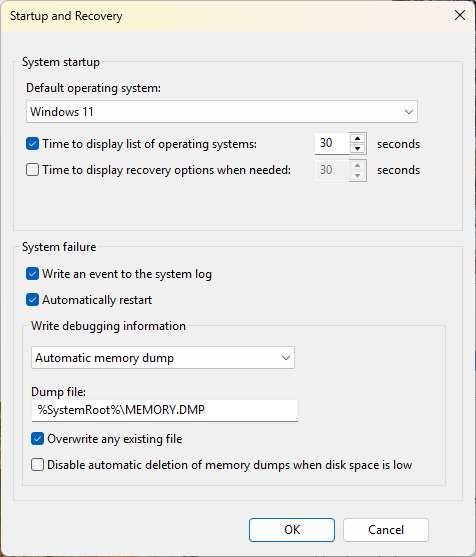
Common Causes for the IRQL BSOD
Several causes for the IRQL_NOT_LESS_OR_EQUAL error are well documented. As always, though, the first thing to ask yourself is “What’s changed recently?” System updates and device drivers may be involved, so you can start by reversing recent updates (one at a time, please, with a test for each) to see if that helps. Common causes include:
- Corrupt system files: These are best addressed using the DISM /Online /Cleanup-Image /CheckHealth command (run at an administrative command prompt or in an administrative PowerShell session). If this command finds anything to report, run DISM /Online /Cleanup-Image /RestoreHealth to clean things up. Next, run the system file checker until it reports nothing found or fixed (this sometimes takes 2 or 3 iterations) by typing SFC /SCANNOW. If either one works, it will often fix the IRQL error as well. Here’s a “milk run” (no problems found or fixed) for all three commands.
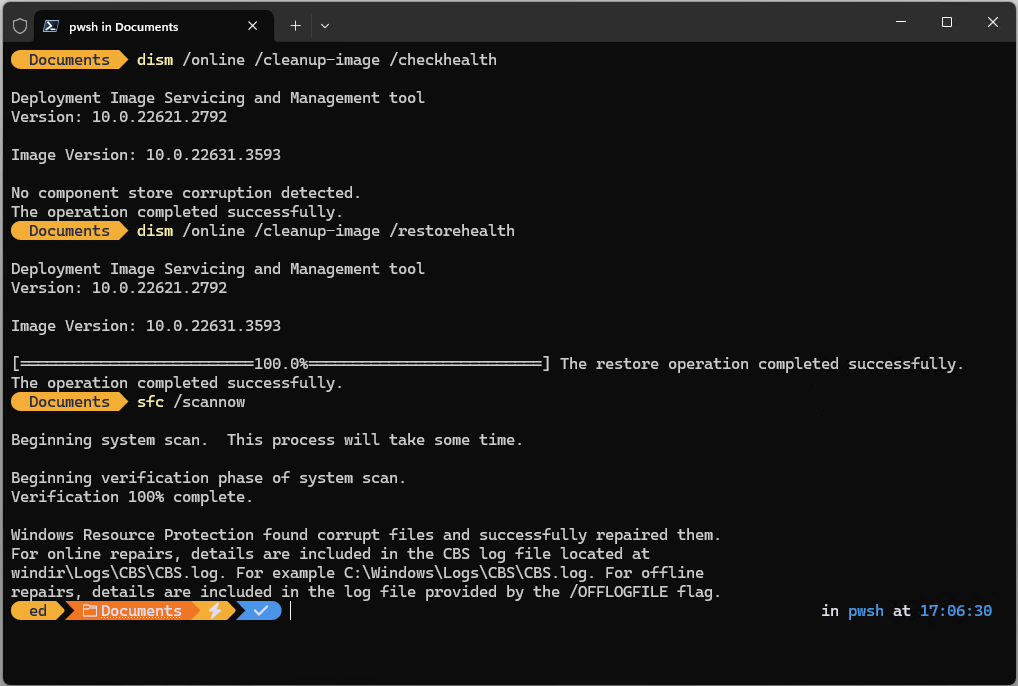
- Incompatible device drivers: if you’ve recently updated a driver, try rolling it back to the previous version. Do this by opening the Device Manager (available when you hit Win + X), right clicking on the device in question, selecting Properties, navigating to the Driver tab and hitting the “Roll Back Driver” button. If the button is grayed out, you may have to uninstall the current driver and install the previous version manually.
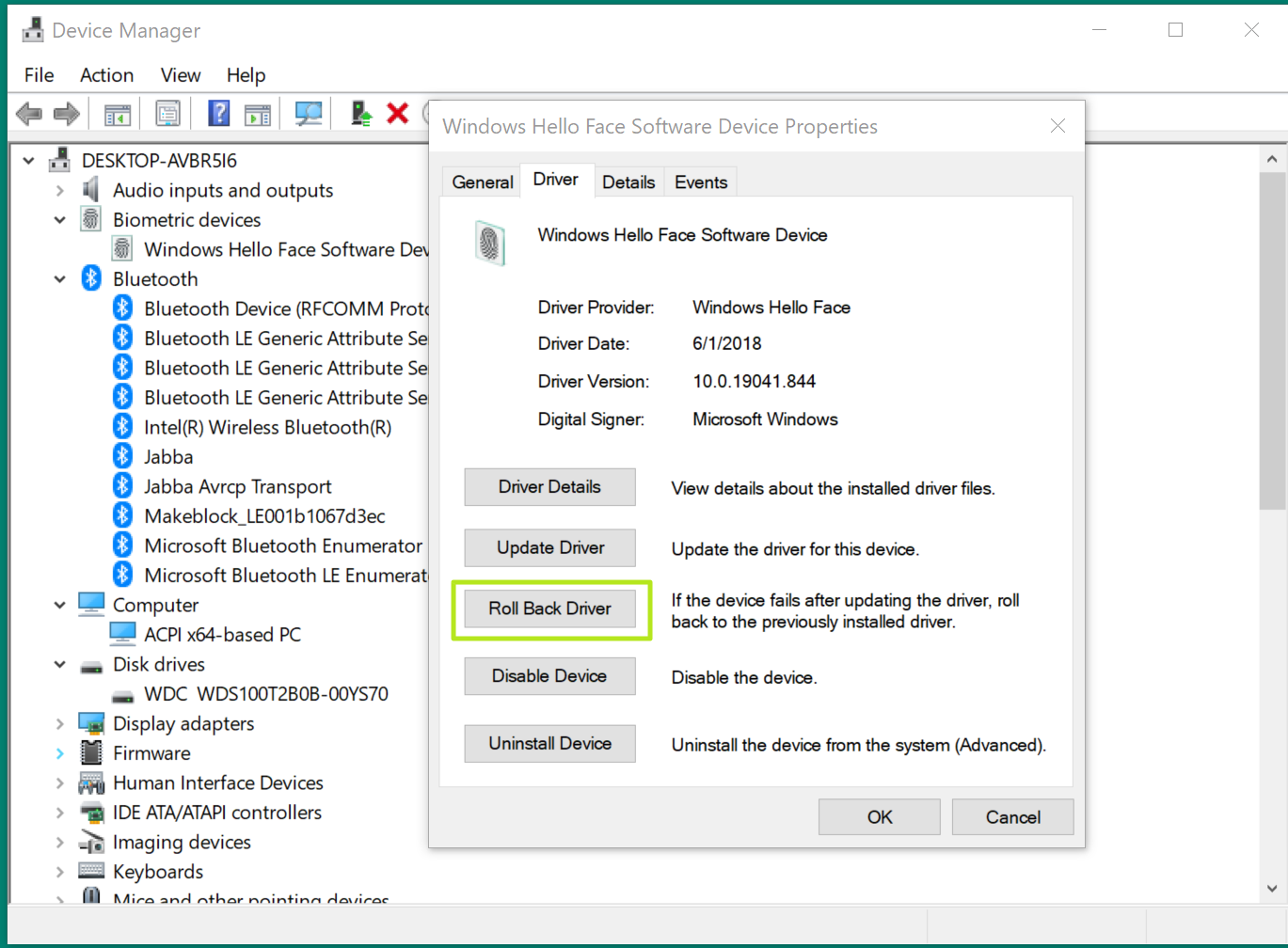
- Faulty hardware: if a device is malfunctioning or failing, you’ll usually see error reports in Reliability Monitor, which you run by typing perfmon /rel in the Run box, at a command prompt, or in PowerShell. Such errors usually show up with a red X, as shown in the following screencap (also labeled “Hardware error”).
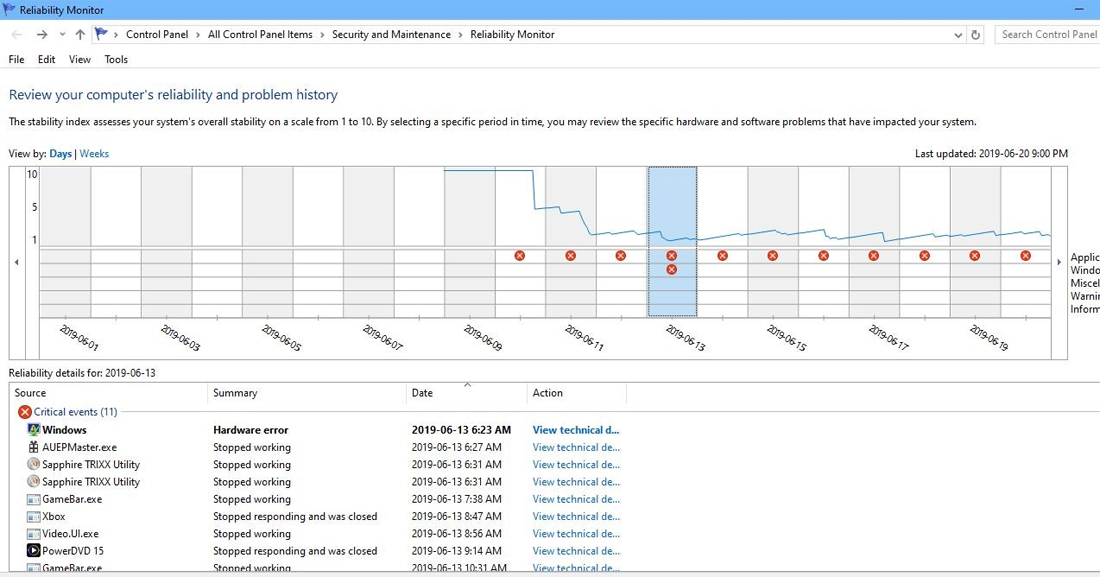
The best thing you can do with a failing or malfunctioning device is to disconnect it from the PC (though for important devices – e.g. mouse, keyboard, disk drive, and so forth – you may also have to replace the ailing device with a known good working instance).
- Damaged or incomplete software installation: If you’ve recently installed an application or update, look in Reliability Monitor for installation failure messages (for updates and upgrades these will also appear in Update History). In such cases, your best bet is to uninstall the problem software and see if the problem goes away.
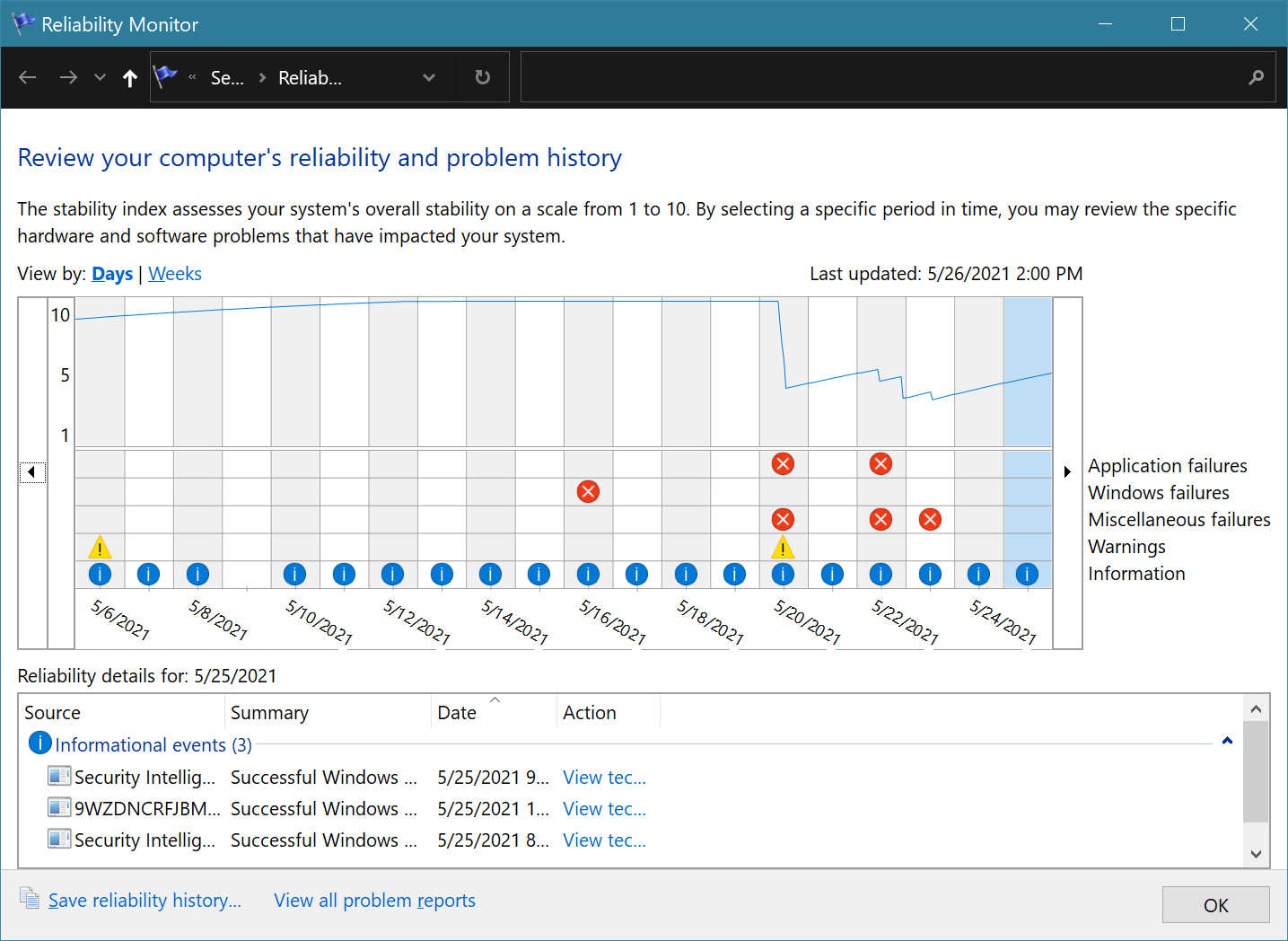
Graphics Drivers Often Cause IRQL_NOT_LESS_OR_EQUAL Errors
I’ve seen the IRQL error on more than half-a-dozen occasions in my 6-plus years of working with Windows 10 and the same problems can occur in Windows 11. In all but one instance, the cause was a buggy Nvidia GeForce graphics driver. In all of those cases, by rolling back to the preceding version, I stopped the IRQL error dead in its tracks.
That’s why I don’t remove duplicate Nvidia graphics drivers from my Windows PCs until the new one has run without problems for a couple of weeks. The excellent GitHub project DriverStore Explorer is great at performing such cleanups, when the time comes. Don’t be too quick to make such cleanups, and you’ll leave the rollback option open to yourself, should you need it.
Try a Clean Boot
If the preceding suggested repairs provide no relief from IRQL_NOT_LESS_OR_EQUAL errors, a Windows clean boot should be your next step. A clean boot starts Windows 10 or 11 with the barest minimum set of drivers and startup programs. It seeks to eliminate possible causes of trouble that have been added to the startup environment over time.
To perform a clean boot:
1. Launch the msconfig System Configuration utility. You can get there by hitting WinKey+R and entering “msconfig.”
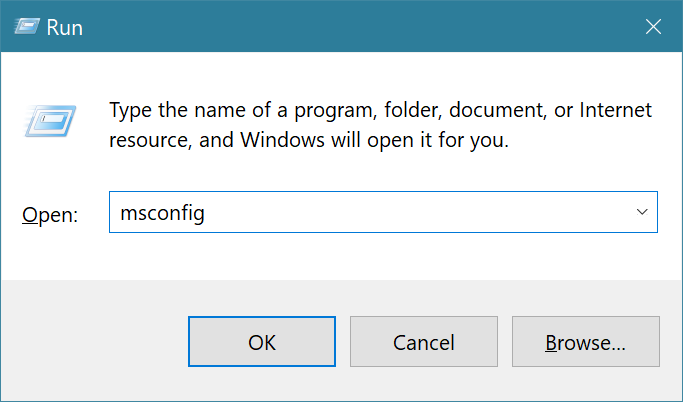
2. Uncheck Load startup items in the General Tab under the Selective Startup setting. This disables all startup items currently present on this PC.
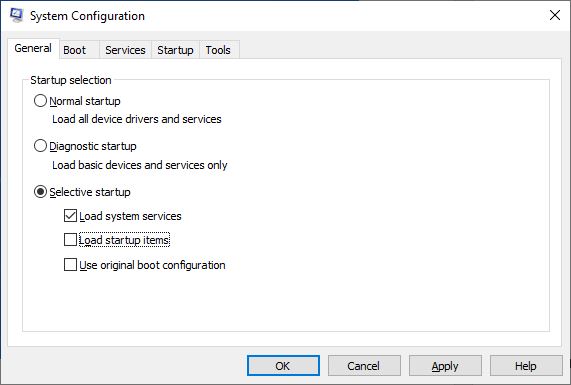
3. Navigate to the Services tab, click the Hide all Microsoft services checkbox at lower left, then click “Disable all.” This disables all non-Microsoft (mostly OS) services on this PC. You can now click OK to close the window.
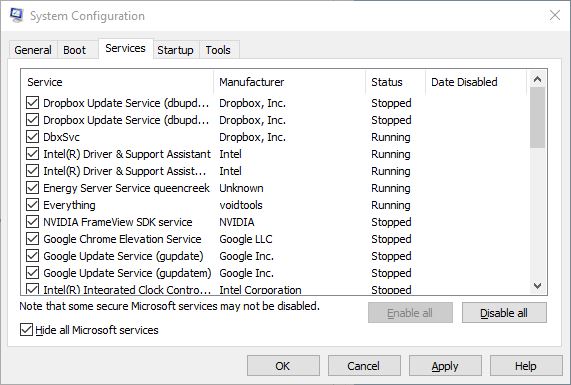
Your PC is now set up for a clean boot, so you’ll want to restart to try further troubleshooting. This may allow you to replace or reinstall otherwise problematic or reluctant drivers, applications, updates and so forth. When you’ve finished your troubleshooting, you must then go back and reverse all changes.
If you’ve already disabled some startup items in Task Manager, for example, you might want to make a screenshot (see how to take screenshots in Windows 10 or 11) to capture the list of disabled items before you disable those still active. That way you’ll know what to leave alone when you put things back the way they used to be.
Troubleshooting non-Windows Services
If your troubleshooting leads you to suspect non-Windows services are involved in the IRQL_NOT_LESS_OR_EQUAL error, you need to conduct a process of elimination to identify the culprit (or culprits). This means turning on 3rd-party services in groups. Shawn Brink at Tenforums.com recommends a binary search technique in his clean boot tutorial. This works pretty well, and helps you zero in quickly. I sometimes do things in groups by vendor (Chrome, Nvidia, Intel, and so forth) and that seems to work well, too.
See Who Else is GETTING IRQL_NOT_LESS_OR_EQUAL Errors
If you visit TenForums.com, BleepingComputer.com Answers.Microsoft.com or the Tom’s Hardware forums and search for IRQL_NOT_LESS_OR_EQUAL and you will see how often the error has been reported lately as there may be a new driver or update wreaking havoc. You will also get some very good ideas on how others have approached diagnosis of the underlying cause, and what fixes they’ve applied.
It’s especially helpful to read through fixes that claim success because these might work for you, too. On the other hand, unsuccessful fixes can be informative, too, because they tell you which repairs to try later rather than sooner (or not at all).







